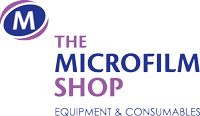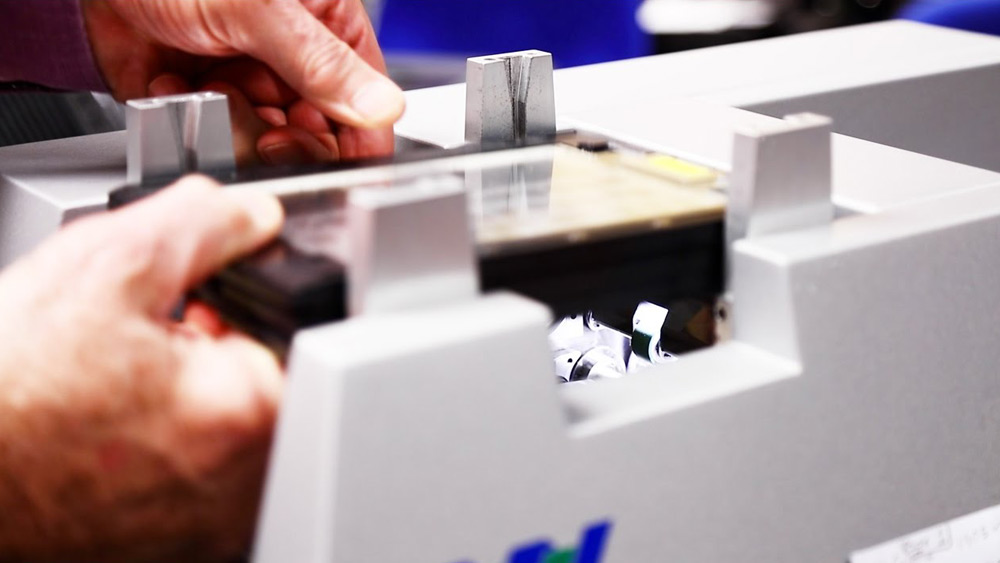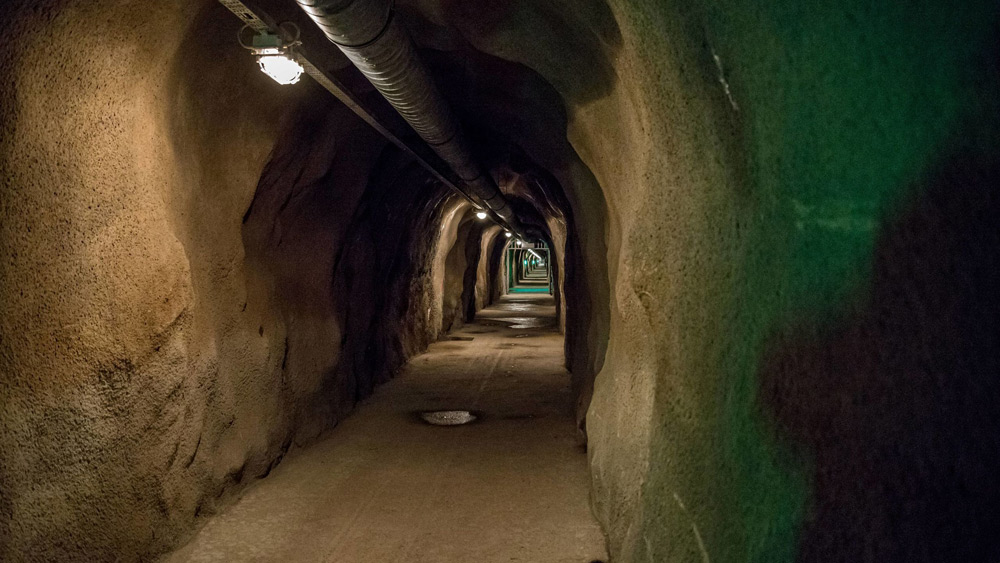There are huge quantities of microfilm material in the archives of organisations and institutions in…
Microfilm in The Modern Office
MICROFILM IN THE MODERN OFFICE? – SURELY YOU MUST BE JOKING?
Q.
As a modern organisation looking to embrace the latest digital technologies for the management of our documents why should we consider microfilm as a storage medium? Surely microfilm is an old technology that has passed its sell by date?
A.
You mean like paper which is over 2000 years old and yet we all still use it? Just because something has been around for a long time doesn’t mean that we shouldn’t use it, especially when the very fact that it is still being used today, after all of these years, points to a product that works and a product that works consistently over time. Not only is microfilm still being used, but new microfilm systems are being sold every day. What do these people know that you do not?
Modern microfilm will last for 500 years – quoted by Kodak for silver based original microfilm that is processed and stored to international standards.
Microfilm is an analogue technology so:-
No matter how technology changes in the next 500 years you will always be able to scan microfilm into the very latest digital systems.
It is as easy to work with as paper (another analogue medium) except that it takes up as little as 2% of the space that paper does.
If all else fails (natural disaster, electricity cuts, software viruses, computer technician on holiday) all you need to read microfilm is a light source (the sun will do!) and a magnifying glass (or the bottom of a broken bottle).
- Microfilm is legally admissible as evidence in court – it has actually been tested by case law. In many countries world wide microfilm is specified as the legally admissible archival medium of choice along with paper. In America over 20 states now insist that mandatory public records with a life of more than 10 years must have at least one copy stored in an analogue format i.e. paper or film.
- Microfilm is easily scanned by a multitude of devices (see later) that allow quick digital access to your microfilm records. Once scanned the important document(s) remain in a microfilm format for long term preservation, but the information on the microfilm is released into the digital arena – email it, fax it, print it, incorporate it into your existing digital document management system. Whatever you can or want to do with digital information you can now do with microfilm information. (Except that you can now sleep at night knowing that your information is safe on microfilm and digitally retrievable at any time in the future).
- Do you know how long the digital technology that you are using today will last? No, nobody does. Figures have been quoted by some manufacturers for CD-ROMS from 10 to 100 years, but nobody really knows because the media hasn’t been around that long. Were you aware that ultra violet light can alter the optical properties of the polycarbonate plastic part of the disk and that oxidisation could impair the readability of the aluminium reflective layer? Also 3 1/2-inch disks can start to deteriorate in 18 months. However, this is only the tip of the Iceberg, the real problem with digital technology is obsolescence. Long before the disk itself becomes unreadable, it is likely that the CD-ROM (as the current digital medium of choice) will be replaced by a new medium and that it will not be possible to find a CD-ROM reader, except perhaps in a museum. Ten years from now, when the hardware you have has been discontinued for 5 years, how are you going to read the old CD-ROM? At the moment it looks as if DVD will be the next technology but they are already working on the replacement for DVD. Yet can you still read 5 1/2-inch disks let alone even older 8-inch floppies? What will the future be? Still using an optical system?
- When technologies change (as they have done and will continue to do with constant improvements and with manufacturers trying to gain a unique advantage over the competition) how easy is it to migrate your old information to the new technology? Is this an easy, cheap, quick and accurate process? If you have all your information on microfilm and technology changes you just scan the microfilm into whatever the new digital technology is – no migration, therefore no loss of information.
- What software do you use to access your digital technology? Can you, or do you even want to, remember when you changed from Office 95 to Office 97? A recent report entitled “Titanic 2020” estimates that it cost the world over $50 billion to deal with the incompatibilities between these two software packages. It goes on to say that “New, feature-laden versions of software appear often, but rarely with full backward compatibility, nor do they work well with other suppliers’ products……The long-term preservation and access problem will assume centre stage of the information age in the first quarter of the 21st Century.” Microfilm and the conversion of electronic information to Microfilm is a solution.
So, how can microfilm be made to fit into the modern digital environment?
Many organisations are now investing in “hybrid” document management systems that make the most of both digital and microfilm technologies. Above I gave the advantages of microfilm, but microfilm also has disadvantages and this is where digital technologies come into their own with their obvious distribution, speed and indexing capabilities.
Microfilm is relatively slow at retrieving documents. Somebody has to find a particular roll of film or jacket or fiche, put it into a microfilm reader and then find the right frame, it is a very manual process (although many organisations are very happy with taking only tens of seconds, as opposed to seconds for digital systems, to find microfilm information especially when the cost issue is brought up). That is why a lot of organisations do not rely completely on microfilm, they use it to complement their digital storage and vice versa. However, with the invention of very user friendly microfilm scanners in the last few years the role of microfilm in the modern document management system has been transformed – the retrieval speed of images from microfilm is getting very close to the retrieval speed from digital devices, in some cases even quicker. Whether you slot a cartridge of film into a microfilm scanner or you slot a disk in the CD drive the result is still the same, except that you know that the digital file on the roll of film will definitely be there.
Organisations who have no microfilm but desire the benefits that it has to offer are doing one of three things:-
They are buying a hybrid scanner that scans paper and simultaneously produces microfilm and digital images. Kodak Micro Imager
They are capturing paper documents with a microfilm camera and then running the finished microfilm images through a microfilm scanner to produce digital images. This can be done in a “low volume-on demand” manner digitising frequently requested frames as they are requested or in a “high volume-batch scan” manner digitising your entire microfilm collection for complete access to all documents. This is also the method being used by organisations with existing microfilm collections, they are still adding to their microfilm collections but now with digital access.
MICROFILM CAMERAS
BUIC Rotary cameras for the fast speed conversion of standard type paper documents.
Canon CF300 Planetary camera for medium speed conversion of standard type and more obscure (A3, plans, maps, diagrams, books) paper documents.
Hirakawa Planetary cameras to do the same as b) but whilst on the move. These portable cameras allow you to go to the documents.
Congress Planetary camera for slow speed conversion of large books, up to A0 documents and plans, fragile documents etc.
LOW VOLUME-ON DEMAND MICROFILM SCANNERS
Revolutionary ImageMouse and ImageMouse Plus for seamless viewing of microfilm images straight on to your PC.
Screenscan scanner that fits on to your existing reader or reader printer and scans whatever is shown on your screen.
Canon MS400/500 stand alone microfilm scanner and printer.
HIGH VOLUME-BATCH SCAN MICROFILM SCANNERS
Award winning Kodak IMS scanner for scanning microfilm images on roll film.
Mekel Production scanners, for both roll film and fiche/jackets. Can scan at up to 100 frames per minute.
They are gathering scanned images and electronically created files and printing them on to microfilm using Computer Output to Microfilm (COM) devices. Although having been around for over 20 years these are the latest growth product in the microfilm industry. With the many thousands of different imaging systems out there many organisations are downloading old digital files to microfilm for archiving thus freeing up valuable hard drive and juke box space, whilst still securing the long term preservation of digital files. By using any of the microfilm scanners mentioned above in point 2) these new microfilms can be turned back into digital files at any time.
Kodak Archive Writer Obtaining the microfilm and digital images is achieved either by doing the job yourself, if the information is of a sensitive nature and you have the resources and staff necessary to convert the images internally, or by giving the job to a local bureau who will charge you a per image rate to convert the images for you.
Once obtained, the microfilm and digital images can again be accessed in one of two ways. Firstly you buy the microfilm scanners yourself and use your existing PC’s to view the information or you leave all the information with the bureau and they provide a “warehouse management” service for you by e-mailing images and files to you on demand at a click charge.
The great advantage of a “hybrid” microfilm system is that it can be tailor made to fit your organisation, do it internally or externally, invest in capital equipment or don’t, have the system mainly microfilm or mainly digital. It all depends on how much you have to spend, what percentage of your information has an archival need (over 5 years) and how much you value your information. For example if your information only needs to be kept for 6 months then microfilm is not even an option, but if you need to keep your information for 20 years then microfilm is essential.
The choice is yours and you do have a choice.
Microfilm is not redundant, it is now an essential part of a modern digital system. It has only been in the last few years that both end users and vendors have started to realise where microfilm fits in to the overall picture – microfilm is no joke, the only joke in town is on those who thought that microfilm was passed its sell by date – you know, just like paper has!
For those of you who think that I have lost the plot I will just add this – I know that digital information and computers are the future and that is the way forward but which digital information? I am convinced it is microfilm-held digital information – take a look at
Paul Negus
The Microfilm Shop



